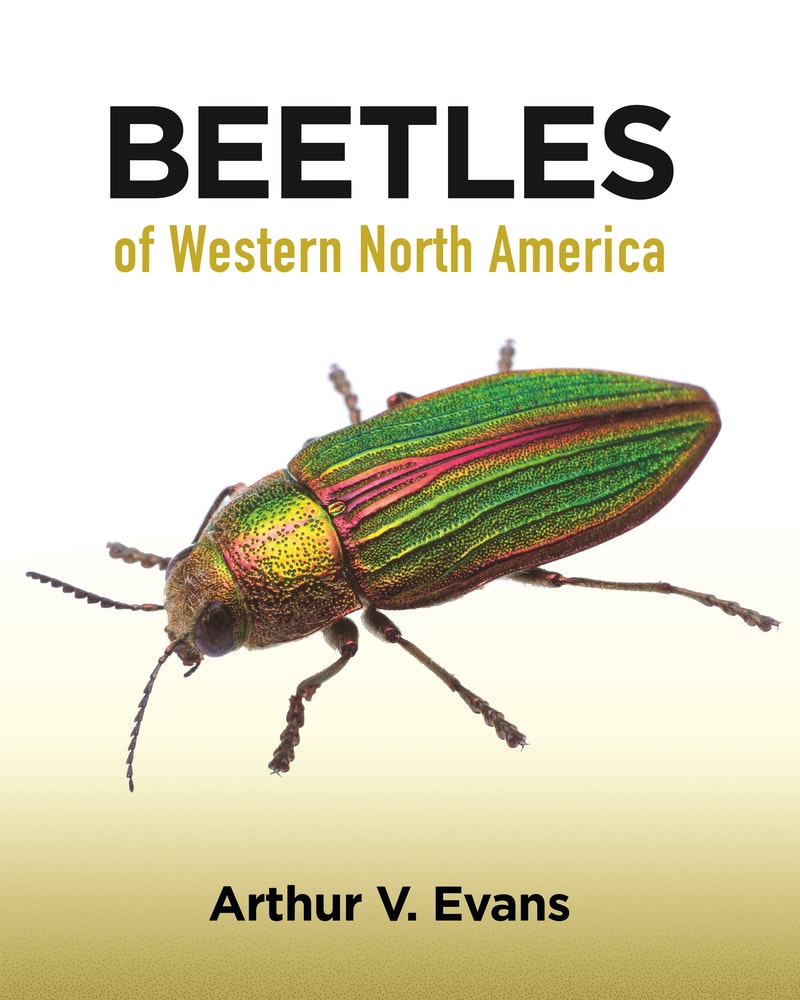Biodiversity Biological recording & species identification Data & bioinformatics
Arthur V. Evans
Princeton University Press
2021
ISBN: 9780691164281
Reviewed by Richard Jones
Oh joy for the Western American naturalist thinking about looking a bit harder at beetles. This is absolutely the book to get you started. With over 1,500 photographs of over 1,400 species across 131 families, Evans provides a superb introduction to the beetles of 11 of the United States west of the Continental Divide, and a bit of British Columbia/ Alberta. Not that this is a book to take in your rucksack, with 624 large pages of glossy paper, and weighing in at more than 2 kilos, this is a pore-over-in-the-evening book of coffee-table proportions. And I’ve been poring/ drooling over it.
Not surprisingly for a photographic guide, large and brightly distinctive species feature heavily, but every group is featured, right down to Ptiliidae and Clambidae, though often with just a single example species given. For the complete novice there is a full introduction to beetles — their ecology, physiology, classification, where to find them, how to identify them, how to study them. But the majority of the book is a detailed look at those 1,428 individual species with bright crisp photos, descriptions, habits, habitats, and geographic ranges. Living with a slightly impoverished British fauna, I’m rather jealous of the wide range of jewel beetles (Buprestidae), longhorns (Cerambycidae) and chafers (Scarabaeidae), but the one I most long to see is the tiny telephone-pole beetle Micromalthus debilis, with its bizarre science-fiction parthenogenetic/ paedogenetic life cycle involving hypermetamorphosis and larval egg-laying. Actually, I’d rather like to see the evolutionarily basal reticulated beetles (Cupedidae) too. Oh, and fireflies (Lampyridae), and all those blister beetles (Meloidae) and darkling beetles (Tenebrionidae). And, well, you get the picture.
A monumental work, and a sister volume to Evans’s equally encyclopaedic Beetles of Eastern North America (2014), all we need now is a look at the everything in between — Beetles of the Great Plains perhaps? Is 2030 expecting too much?


